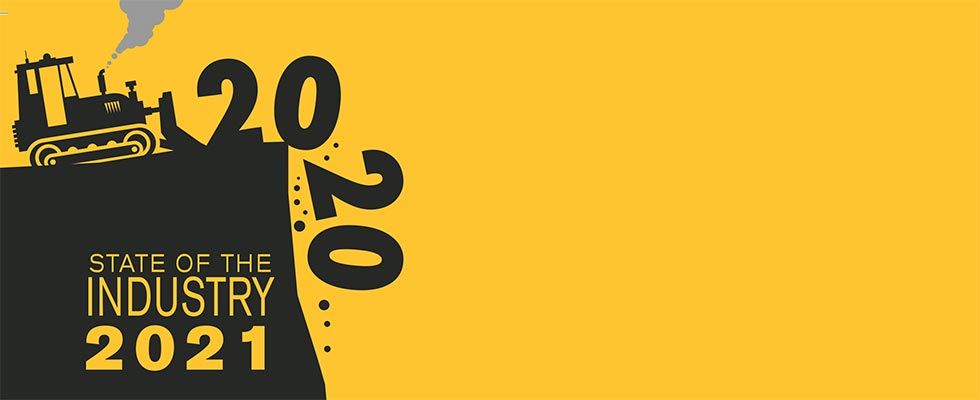
Earlier this month, Pumps & Systems spoke with Adriana Herrera and Alex Flores from Weir Oil & Gas on how the aftermarket industry has been impacted by the COVID-19 pandemic. Herrera is a business process engineering manager, and Flores is a regional marketing director for the U.S. and Latin America.
How has the aftermarket industry been hit by the COVID-19 pandemic?
FLORES: The pandemic impacted the aftermarket in a few ways. First, it caused oil prices to decline and even go negative for a brief period. When the oil market declines, it is common for oil and gas companies to leverage their existing horsepower initially. This is a short-term fix, as it is not sustainable once oil prices start to rise and companies return more of their pumps back into the field.
Second, many oil and gas companies were forced to reduce their labor force because of the pandemic. Companies that cut their staff lacked the flexibility to respond to the needs of operators and oilfield service providers that were still active in the field. Rather than cut staff, we were able to retain our highly skilled experts with a reduced schedule to ensure we had the capacity to respond quickly once demand began to rise again so as to meet users’ quick-turnaround needs.
Third, the pandemic impacted the traditional way of working. Many workplaces divided employees into teams to adhere to social distancing mandates and Center for Disease Control and Prevention (CDC) guidelines. Work areas had to be reconfigured and multiple safety protocols were implemented across workshops such as daily temperature checks, face masks and video conferencing as an alternative to in-person visits.
What is changing as companies service pumps? How have service centers had to shift?
FLORES: Many service centers have had to make several adjustments because of customers leveraging existing horsepower and the “stop and start” environment caused by the pandemic. This has led to more last-minute service requests as operators and oilfield service providers grapple with quickly putting units back into operation to meet job deadlines. Tapping into existing horsepower typically ends up costing users more in the long run. Even in this unprecedented time, quality must remain high despite price sensitivity.
How are companies reevaluating their service partnerships?
FLORES: Operators and oilfield service providers are revisiting their options to ensure a partner can meet the last-minute deadlines that are the current norm.
Service providers are essential for companies to win jobs and are true partners in a company’s success.
The current climate is causing some companies to find new service partners that are responsive and conveniently located, while others are attempting to make small repairs in-house and save major repairs for service partners. It is more critical than ever for companies to minimize the amount of time equipment is offline for maintenance.
Are any pump parts not being used as much (or used more) since the pandemic hit?
FLORES: Supply chain simplification for maintenance is very important to customers right now. We’ve seen a trend of companies using longer-lasting equipment or ESG-friendly electric fleets. Lowering total cost of ownership (TCO) through supply chain simplification and focusing on environmental, social and corporate governance (ESG) is a priority.
What approaches are not being applied in service centers that should be?
HERRERA: Lean approaches (creating more value for customers with fewer resources) and applying asset management programs in service environments lead to important process improvements. Lean maximizes use of current resources, reduces waste and promotes collaboration and best practices.
What is lean, how does it benefit users and does lean have a place in the shop?
HERRERA: Lean is an approach where an organization takes on continuous improvement as part of their culture to eliminate waste and add value to users. Lean creates efficiencies that result in faster turnaround times and greater quality.
We implemented lean prior to the pandemic and created Centers of Excellence around it. This allows us to guarantee our quality around the network while helping customers reduce costs and meet deadlines.
What are some of the positive lessons that are being learned?
HERRERA: Lean and using radio frequency identification (RFID) with [an] asset management program made it easier to adapt and adjust to market changes caused by the pandemic.
The continual improvement philosophy lean promotes adaptability while maintaining quality.
How do you see the servicing of pumps in a post-COVID-19 world, or the “new normal” world, shaping up after this?
FLORES/HERRERA: Whether the market ushers in a workforce reduction or spiking demand, we believe being process-dependent is here to stay. Aligning creativity with lean provides a distinct advantage that improves products and the workforce’s skills.
Users, as well as service centers, are trying to do more with less. Service centers must be responsive even though new pumps are increasingly complex due to advanced features such as onboard lubrication systems. Because of this, robust repairs that increase a pump’s reliability will increase.

